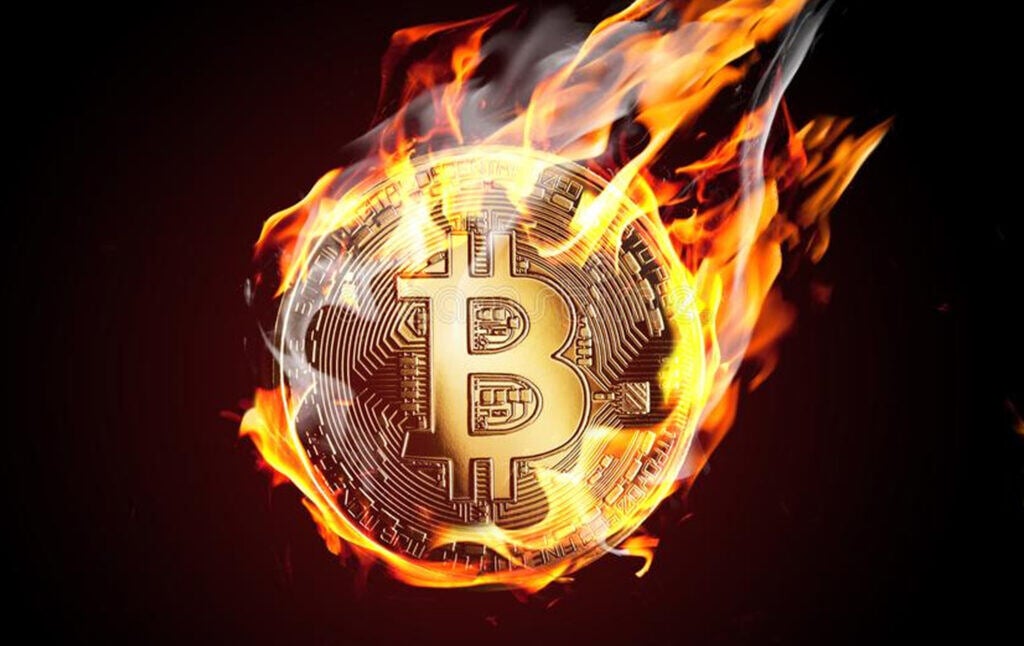ภาพประกอบ Jens Mahnke / Pexels
ได้อ่านบทสัมภาษณ์ของ Nicholas Weaver นักวิจัยด้านคอมพิวเตอร์และอาจารย์ที่ UC Berkley ซึ่งตามศึกษา Bitcoin และคริปโตมายาวนาน และได้ข้อสรุปว่ามันไม่มีประโยชน์เลย “ควรเอามันไปเผาทิ้งซะ” (Burn It with Fire)
คลิปบรรยายของ Weaver ในปี 2018
เรื่องความดุดันของ Weaver นั้นคงต้องหาโอกาสเขียนถึงในภายหลัง แต่ถ้าตัดประเด็นนั้นออกไป การอธิบายแนวคิดเรื่องคริปโตของ Weaver ถือว่าได้เข้าใจง่ายและเห็นภาพที่สุดเท่าที่เคยอ่านมาทั้งหมดเลยทีเดียว
เริ่มจากการจ่ายเงินแบบไม่ต้องมีตัวกลาง (intermediary) โดยสร้างสกุลเงินสมมติชื่อ Quatloos ขึ้นมา (ชื่อเอามาจาก Star Trek)
So in theory, it’s supposed to be a way of doing payments with no intermediary. So the idea is that if Alice wants to pay Bob a bet for 200 quatloos.
So if you want to gamble with your imaginary currency, there should be no intermediary that is responsible for executing the transfer. It’s just direct peer to peer electronic cash. Or at least that’s the idea.
คำถามต่อมาคือ เราจะจัดการกับบัญชีอย่างไร ว่าใครจ่ายให้ใคร จ่ายแล้วยอดเหลือเท่าไร
Now the problem is: how do you know who has what balance?
โมเดลการจ่ายเงินที่มีตัวกลาง ก็ให้ตัวกลางเป็นคนจัดการเรื่องนี้ให้ (เช่น Visa หรือ PayPal) แต่ในแวดวงคริปโตก็มีแนวคิดว่า เอาตัวกลางออกไป เอาบัญชีรับจ่ายมากางให้ทุกคนเห็น แบบไม่ต้องระบุตัวตนชัดเจน ใช้ชุดรหัสตัวเลขที่อ่านไม่ออกแทนตัวตน (แนวคิดเรื่อง Distributed Ledger)
With cryptocurrencies, the idea is, let’s eliminate the notion of the intermediary by making our balances public, but pseudonymous. So you’re no longer you, you are just some long sequence of random-looking numbers. And let’s create a ledger in the town square so that everybody’s bank balance is public in the town square, but only identified by the pseudonyms.
So for Alice to pay off her wager, she writes a check: “I, Alice’s Random Pseudonymity, pay Bob’s Random Pseudonymity 200 quatloos. Signed, Alice’s Random Pseudonymity.” Bob then checks to make sure that Alice indeed has a balance, and if so, posts that check to the public ledger. Now everybody knows that Alice is down 200, Bob is up 200. And that’s how it works.
แต่การกางบัญชีไว้ในที่สาธารณะ ก็เปิดโอกาสให้ใครก็ได้มาแอบโกง เขียนตัวเลขทับบัญชีได้ ทางแก้จึงต้องเป็นเรื่องการทำ consensus เพื่อยืนยันความจริงระหว่างกัน ซึ่งเป็นวิธีที่เปลืองพลังงาน เพราะต้องลงแรงทำงานมาพิสูจน์ (proof of work)
The problem is: how do you keep somebody from adding to the ledger and faking stuff? Well, that’s where the notion of the “mining” comes in. What the miners are doing is literally wasting tons of electricity to prove that the record is intact, because anybody who would want to attack it has to waste that similar kind of electricity.
Weaver จึงสรุปว่าการออกแบบ Bitcoin นั้นไม่เวิร์คเลย เพราะเราต้องเลือกระหว่าง insecure (โดนโกงบัญชี) กับ inefficient (สิ้นเปลืองพลังการคำนวณ) ซึ่งสุดท้ายแล้ว เราก็เลือกอย่างหลัง (ใช้พลังงานเยอะเพื่อกันโกง)
This creates a couple of real imbalances. Either they’re insecure or they’re inefficient, meaning that if you don’t waste a lot of energy, someone can rewrite history cheaply. If you don’t want people to rewrite history, you have to be wasting tons and tons of resources 24/7, 365. And that’s why Bitcoin burns as much power as a significant country.
นอกจากนี้ยังมีเรื่องความเร็วในการประมวลผลด้วย
The problem with the Global Public Square is that it is a single, limited entity, and you have only so much you can add to it at any given time. So Bitcoin burns that much of the world’s electricity to be able to process somewhere between three to seven transactions per second across the entire world.
และเรื่องการไม่สามารถย้อนกลับธุรกรรมได้ถ้าเกิดปัญหาขึ้น
Modern finance has this rule that anything electronic needs to be reversible for short periods of time. This allows an undo in case of fraud. Have you had your credit card compromised before? I’ve had my credit card numbers stolen a couple of times. The amount of money I lost is zero. Because we have both good fraud protection and good ability to reverse transactions. That does not exist in the cryptocurrency space. If your cryptocurrency wallet is compromised, all your apes are fudged.
ในบทสัมภาษณ์นี้ Weaver ยังเปรียบเทียบการลงทุนในหุ้น (positive-sum) กับลงทุนในคริปโต (zero-sum) เพราะหุ้นมีเรื่องของเงินปันผลและการซื้อหุ้นคืน (buybacks) จากตัวบริษัทเข้ามา ในขณะที่คริปโตอยู่ได้ด้วยเงินจาก “ดาวน์ไลน์” ล้วนๆ
So the stock market and the bond market are a positive-sum game. There are more winners than losers. Cryptocurrency starts with zero-sum. So it starts with a world where there can be no more winning than losing. We have systems like this. It’s called the horse track. It’s called the casino. Cryptocurrency investing is really provably gambling in an economic sense.
ยิ่งพอบวกกับระบบโดยรวมสิ้นเปลืองพลังงานต่อโลกด้วยแล้ว ทำให้มีหลายคนเรียกมันว่าเป็น negative-sum ไปเลย
Weaver นิยามมันว่าเป็น a self-assembled Ponzi scheme คือเป็นระบบแชร์ลูกโซ่ที่เกิดขึ้นมาโดยไม่มีใครตั้งใจ แต่ตัวมันถือเป็นแชร์ลูกโซ่
This is why I call the space overall, a “self-assembled” Ponzi scheme. There’s been no intent to make a Ponzi scheme. But due to its nature, that is the only thing it can be.
Because it’s a self-created pyramid scheme, you have to keep getting new suckers in. As soon as the number of suckers dries up, it collapses.
ในบทสัมภาษณ์ฉบับเต็มยังมีประเด็นอื่นๆ อีกมาก เช่น Tera, Tether ใครสนใจตามไปอ่านกันได้

